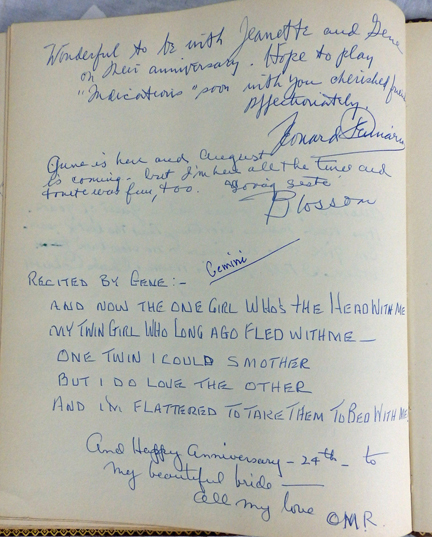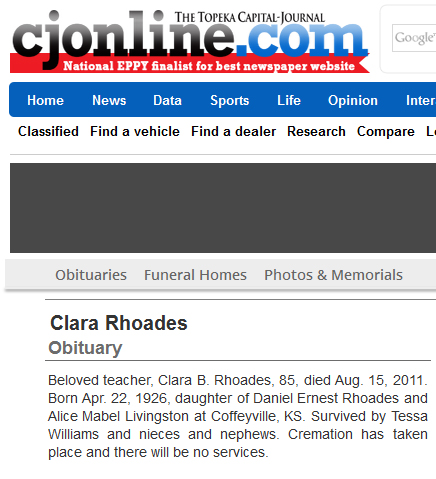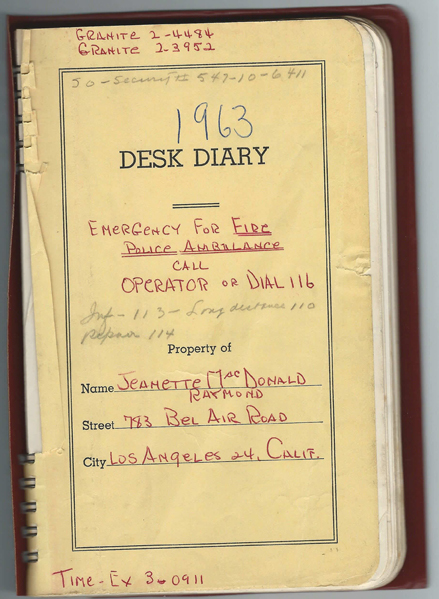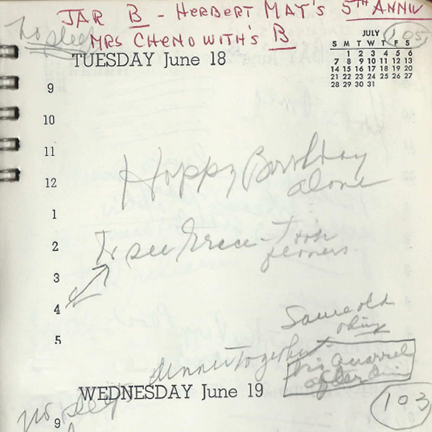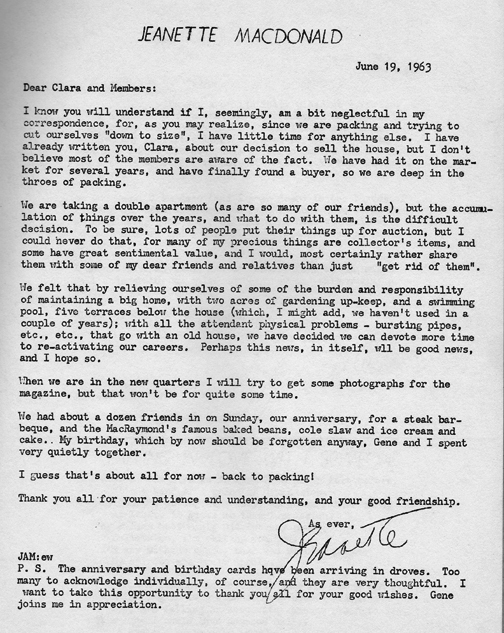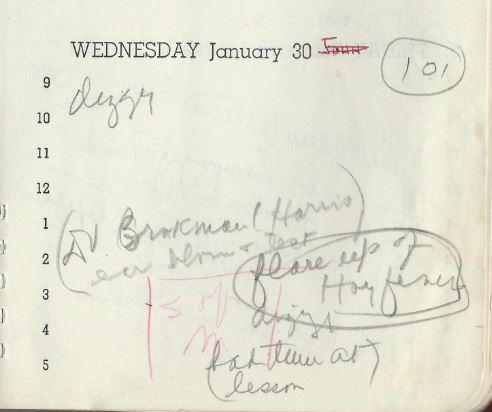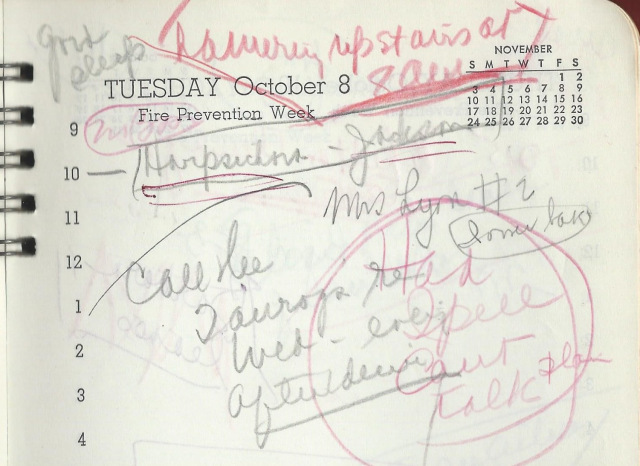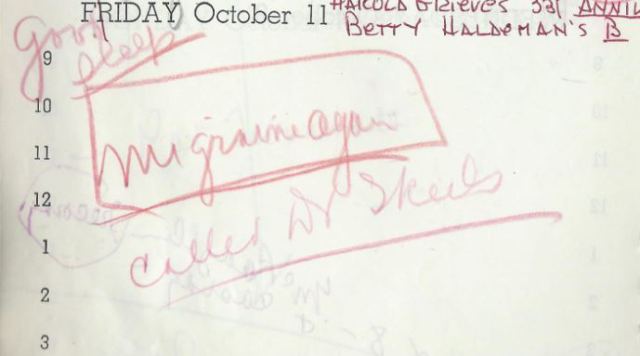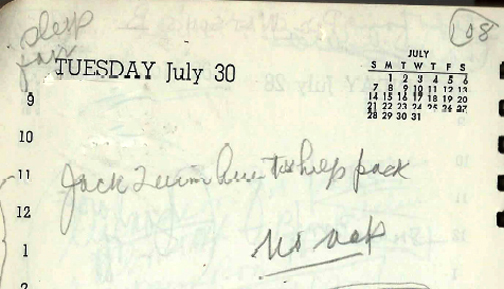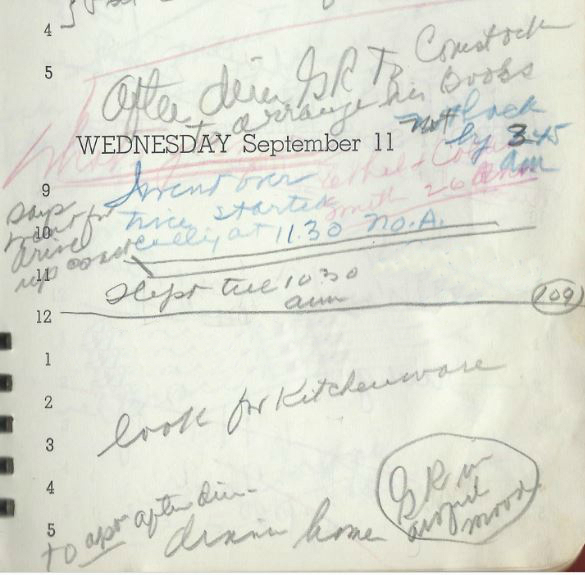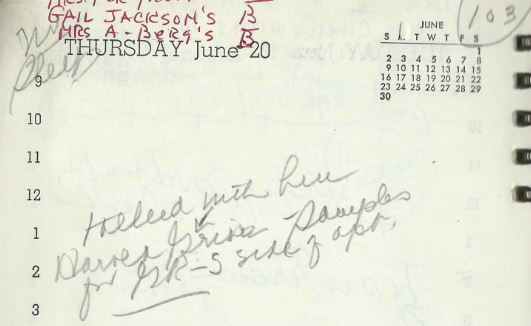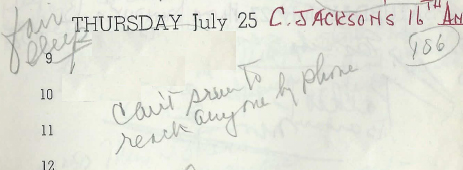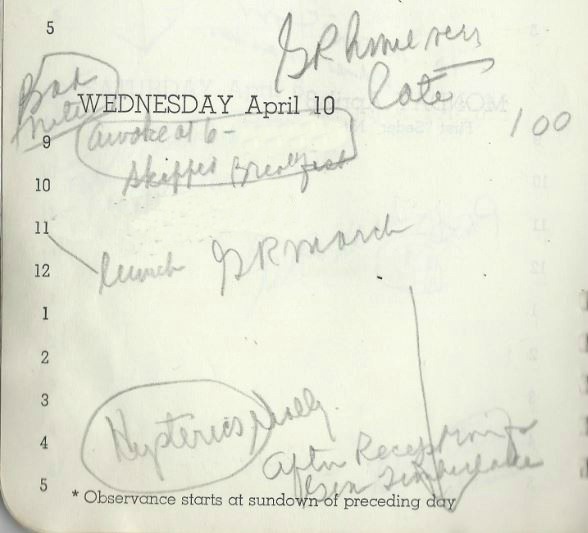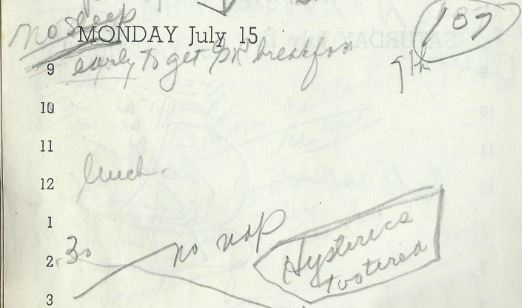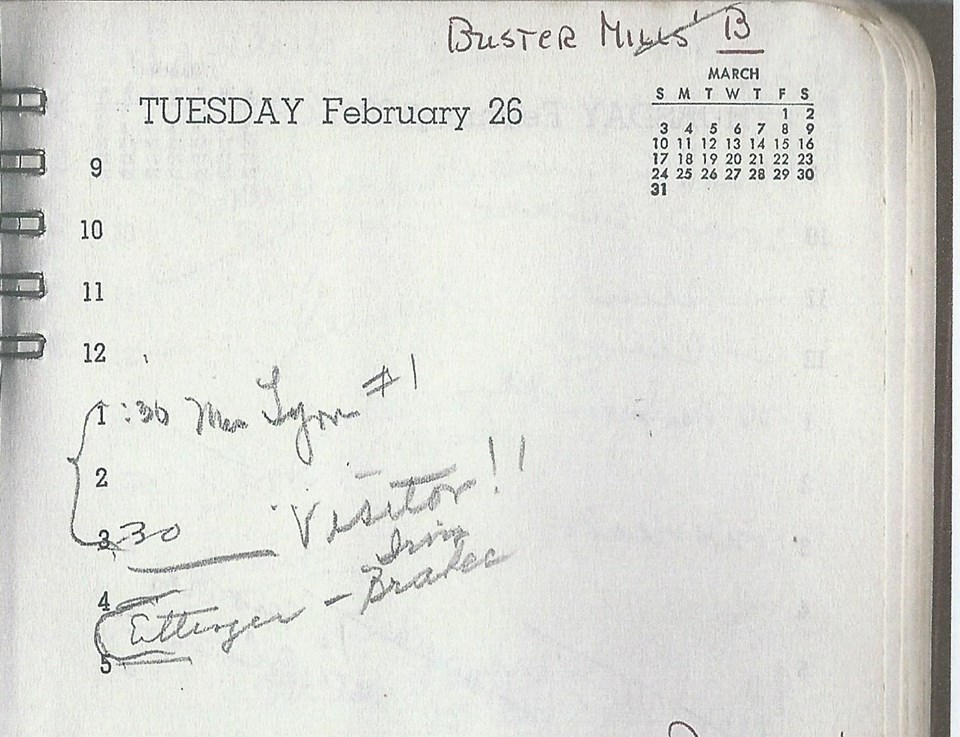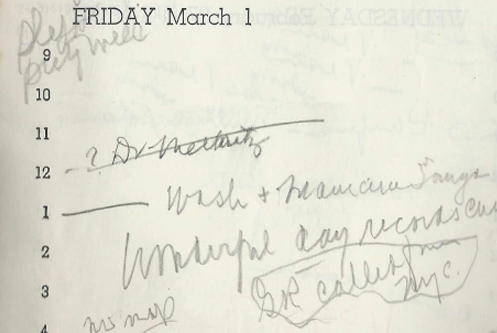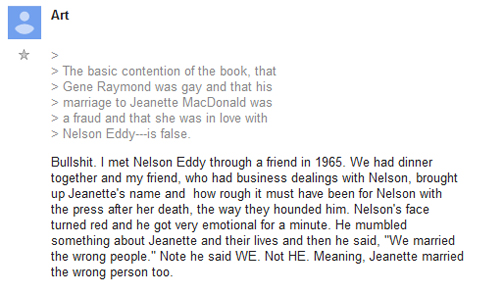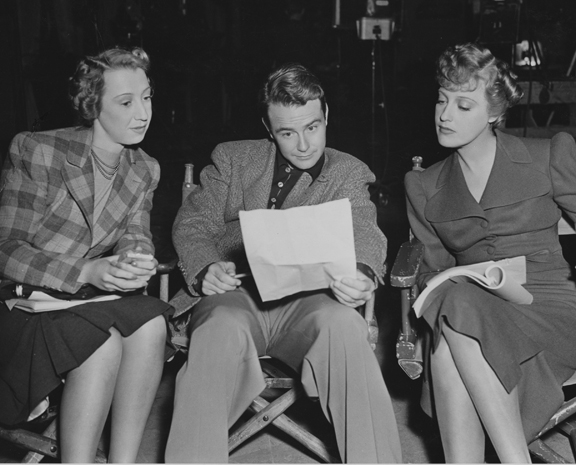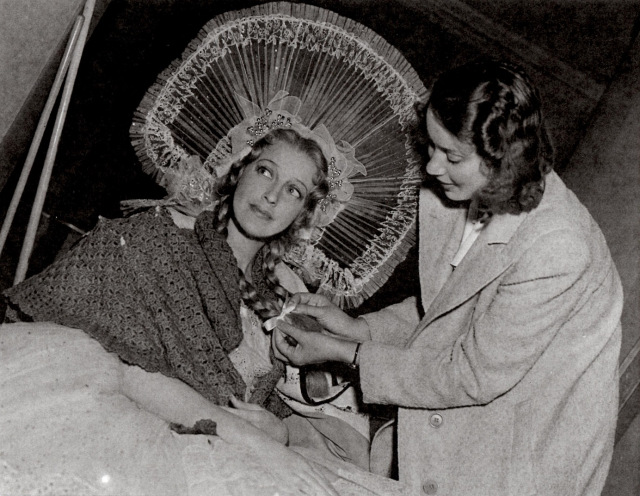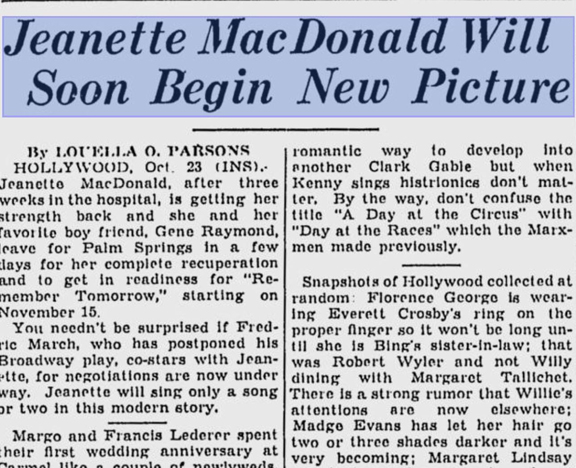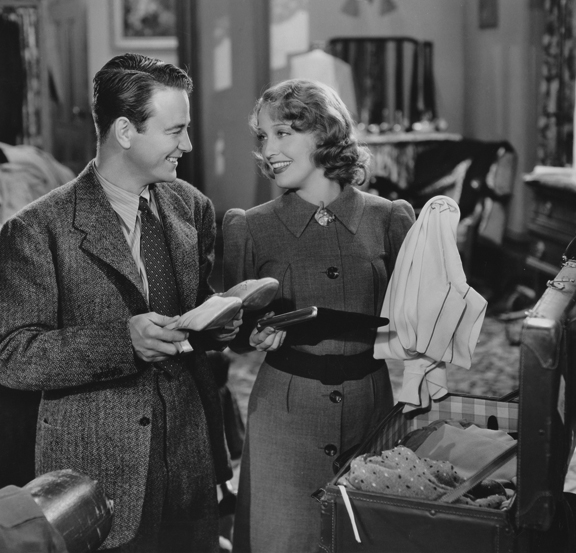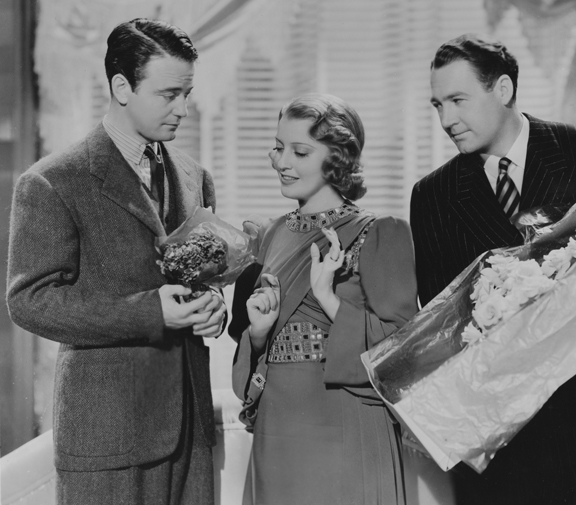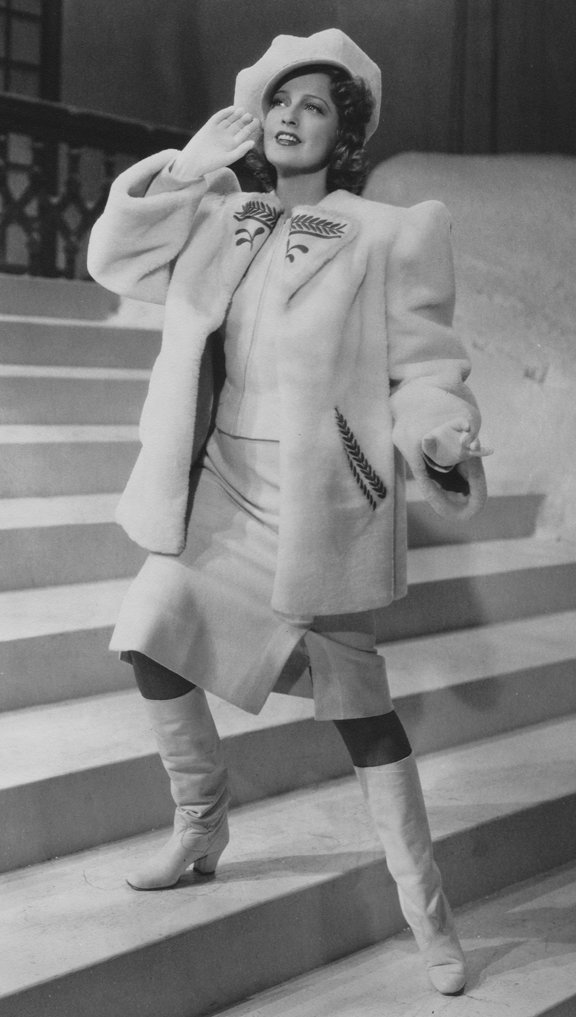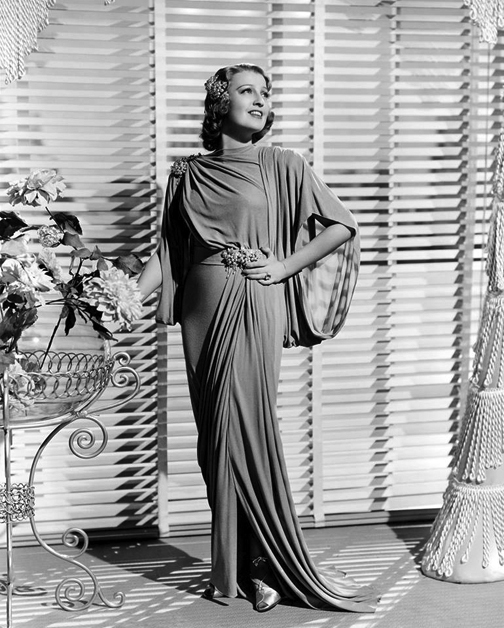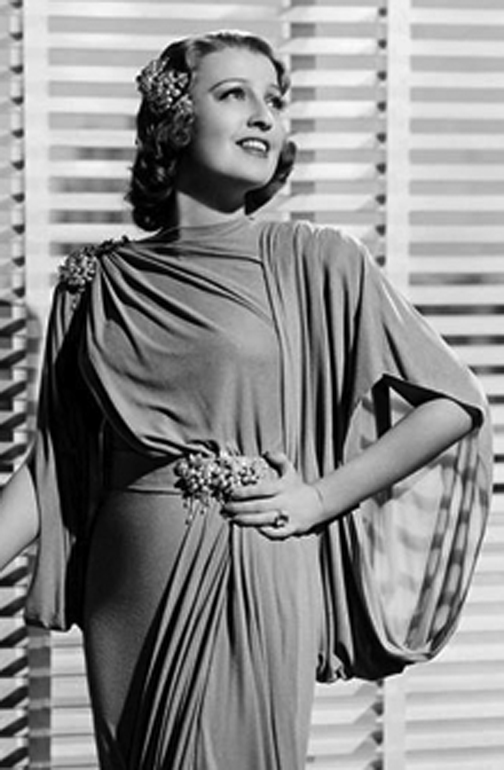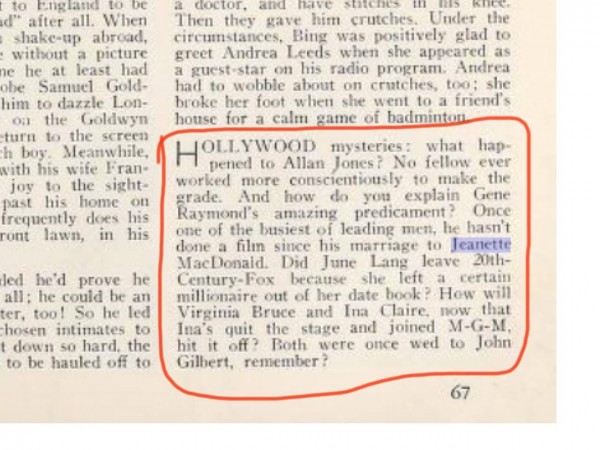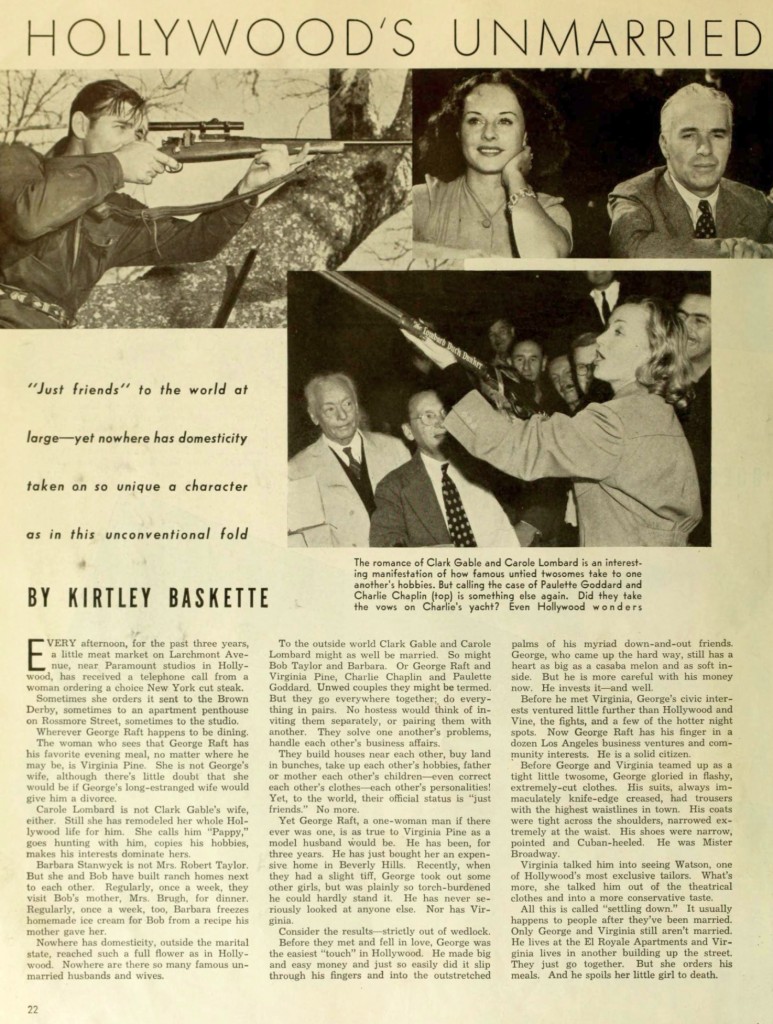Jeanette MacDonald 1963 Desk Diary…her secrets revealed
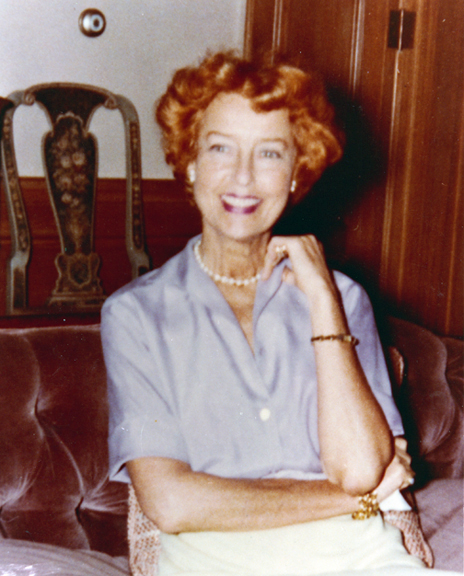
Above is Jeanette MacDonald as she looked in the 1960s. Beautiful, same winsome smile but very thin and frail. She doesn’t appear to feel very well. And indeed she didn’t feel well; heart disease was quickly sapping her limited strength and diminishing her quality of life. Plus terrible loneliness only added to her physical pain. As we can see from her day-to-day desk diary in 1963, for example, there were 44 days (out of ten months in which she used this diary) where she noted that she was left “alone.” In earlier days this might not have mattered since she was used to being independent and traveling around but by 1963 that was both a physical and emotional effort.
In her last few years, she went through the motions, tried to save face with friends, family and Nelson Eddy, pretending all was status quo and good. Below we see an entry from Jeanette’s party guest book, celebrating her 1961 birthday and anniversary (two days apart). Here we see a rather crude and offensive “poem” apparently recited by Gene:
Blaming it on her “Gemini” nature, he says: “One twin I could smother but I do love the other, and I’m flattered to take them to bed with me….And Happy Anniversary – 24th – to my beautiful bride – All my love OMR [Old Man Raymond].”
I’m sure the guests were very appreciative of this apparent “proof” that Gene was the loving, caring husband, keeping a watchful eye on his delicate but beautiful spouse. However, one wonders whether Gene would have recited such a “poem” had Nelson been there. Maybe he would have just to antagonize Nelson…who can say. But as Jeanette noted in her letter to her fan club regarding this party: “Too bad Nelson was on tour – we missed him.” (It’s rather telling that Ann Eddy by herself was not invited!!!)
Below is a candid at the 1962 Clan Clave fan club get-together, one of her increasingly few public appearances. She tried to skillfully cover it up but look how very thin she was.
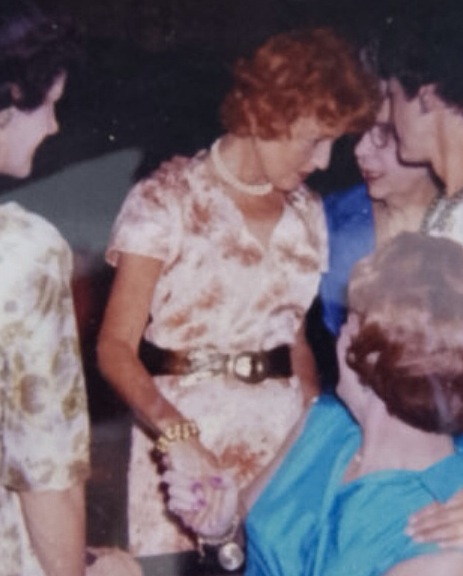
Posted here at the same event with Dorothy Cassidy (wife of Thomas, the KFAC radio announcer) and daughter Peggy, Gene and Jeanette look happily married as always though the behind-the-scenes picture was very different.
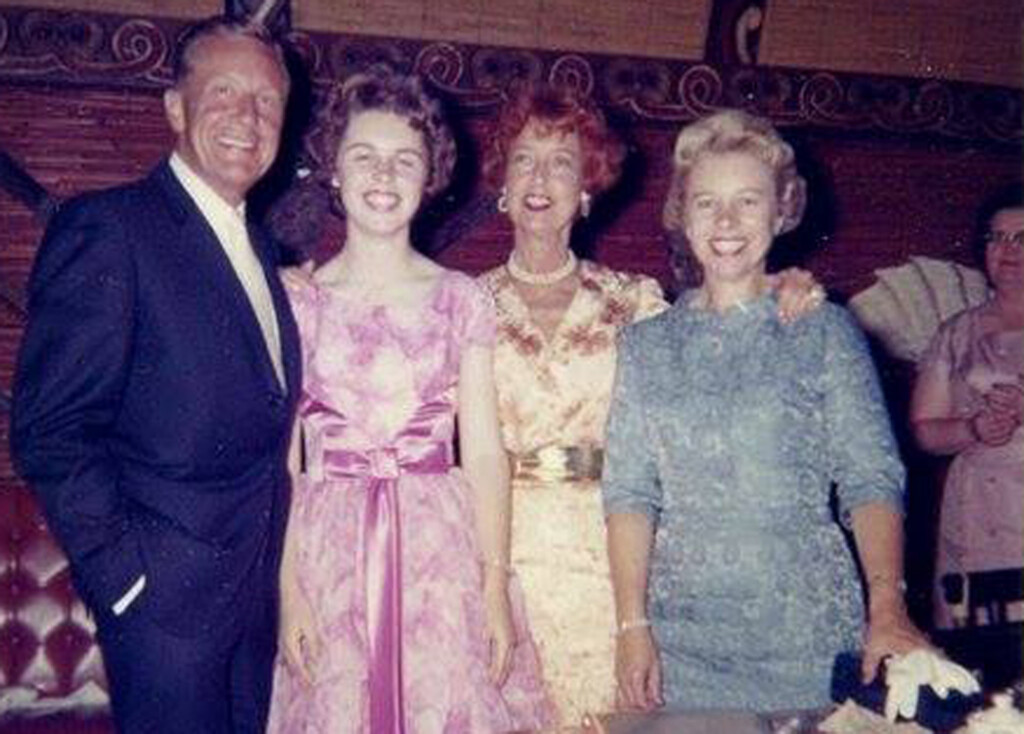
How different? Well, we have a day-by-day, blow-by-blow description of her personal heartache and decline from her 1963 desk diary which was in the possession of her fan club president Clara Rhoades (seen in the photo above right although slightly cut off). While Clara and her group asserted Jeanette’s happy home life, it’s obvious they didn’t wish to share with her readers any knowledge from Jeanette’s handwritten entries. But happily that cover-up is no more.
Below is Clara’s obituary from 2011:
It is because Tessa Williams was in failing health and has since passed away (in November 2015) that we were able to obtain this important piece of documentation.
The desk diary has been discussed both on video from our last Mac/Eddy event and as a raw, unsentimental written overview. What I’d like to do here is point out how Jeanette herself verifies many things I wrote about in the last couple of chapters of my book Sweethearts. Please note that I knew nothing about this diary until mid 2015. And yet sometimes it seems that Jeanette was somehow looking right over my shoulder as I was writing it.
Before I launch into actual quotes from the book and examples from Jeanette’s writings, look at the cover of the desk diary. Jeanette has noted how to contact long distance and she has the phone number to get the precise time. During 1963 Gene Raymond (who she calls GR in the diary) was away a lot but often in the same time zone. Why would Jeanette have to keep careful tabs on time and deal with continual long distance phone calls? Yes, Gene was out of town a lot but she makes notations of dates that Gene calls her from New York or elsewhere…she is very meticulous about this…it is sometimes every other day or longer. The obvious answer for daily phone calls is Nelson Eddy, they spoke no matter where in the world he might be.
In keeping up the facade of her happy life, here’s an example showing how Jeanette was not always truthful when reporting “facts.” Take her birthday, June 18. We know from Jeanette’s diary entry that she was alone although Gene Raymond showed up for dinner with her…
At some point that day Nelson certainly would have called her. And what happened? “Big quarrel after dinner…same old thing.” We take it for granted that Gene accepted Nelson’s presence in Jeanette’s life but this entry would indicate that there were still many quarrels about it. Furthermore, Jeanette had “no sleep” either on the night of the 17th or the 18th. In general – an awful time for her. And yet what did she write her fan club?
This is the PR version that Jeanette relates to her fans: “My birthday, which by now should be forgotten anyway, Gene and I spent very quietly together.” Um…no, Gene left you alone and only showed up at dinner…and then there was an ugly scene after. And this was, by the way, Jeanette’s 60th birthday but there was no party, Gene didn’t take her out to a restaurant for a special meal….nothing.
Despite what Gene might write or say in public, Jeanette’s diary shows there’s no mention of any real warmth or affection (or a love life) between Jeanette and Gene. Even looking at logistics alone, Gene was gone much of the time whether for work or for events or other excuses…any reason to stay away. In Jeanette’s letter to her fan club dated April 10, 1963, for example, she writes: “It always creates a sort of disruption in our routine when Gene has to go back East for any length of time. And since he was there several weeks, it meant a lot of catching up when he got back, including flying time at March Field.”
There is exactly one mention of any attempt at affection or comfort from Jeanette to Gene during this entire year. On January 25 it appears there was some issue with him (why Gene was angry with her was not specified). Jeanette went to a Science of Mind lecture later which she found “very interesting” and that night she “made the mistake” of venturing to Gene’s bedroom for what? To talk? Resolve the problem? Comfort? A hug or reassurance? Or more? Whatever reason, he rejected her peace treaty. “Indifferent results” she noted and returned to her room. Next day “went to movie – after movie things ok with GR.” But she wasn’t feeling well and noted: “I’m too tired” to go out the next day. The following day, she tried to take a voice lesson with Grace Newell but it was “too much” for her and she had a dizzy spell. And more dizzy spells followed on the next days.
To put things in perspective, we know that Gene was at this time involved with actress Jan Clayton plus he had several male lovers. One wonders how much Jeanette knew about any of this. Or if she did, whether she cared or not.
The June 25 notation is troubling: “GR returns for dinner…terribly dizzy after dinner”. I wonder whether there is a connection here to what I wrote in Sweethearts:
Sunny Griffin…spoke of how Gene would put sleeping powders into Jeanette’s juice or drinks…
One could presume that Gene was trying to be helpful due to Jeanette’s chronic insomnia…but the connotation provided by Sunny was altogether different. This was verified by another of Gene’s friends who stated that Jeanette, well, cramped Gene’s social life in their home, you might say. Which also begs the question as to what Jeanette was referring to when she notes on June 6 a “big fight” with Gene – “came home too early.” Is she saying she came home too early and found Gene doing – what?
Jeanette is careful writing to her fans about anything that touches the subject of Nelson Eddy. For example, regarding the big Bel Air fire (which burned down “Mists,” by the way), she notes that “Fred MacMurray and June had their house partially burned, but what wasn’t burned was ruined by water.” Why would she mention this house specifically? She wasn’t close friends with the MacMurrays…Well, because it was the house on Halvern that Nelson had built FOR THEM, Nelson designed it back in 1938 when he thought Jeanette would divorce Gene and they would live there and raise a family together.
The neglect and verbal abuse that Jeanette suffered during this year was described in Sweethearts:
One day Jeanette did not feel well and managed to walk to the staircase banister and she called down for Gene who was in the house but ignored her.
We see several instances in this diary of Jeanette being dizzy and/or unwell, here’s one example:
As for other health issues, here is a quote from Sweethearts:
Along with low blood pressure and frequent fainting spells, it was rumored that she’d also suffered at least one stroke as her speech was temporarily affected.
In her diary Jeanette wrote in pink letters: “Had spell can’t talk”
The migraines that several people told me about that so plagued Jeanette were in full evidence during this year, several mentions including this:
On occasion Gene was busy at home with friends, here’s one who’s mentioned in the book:
Anyone who says that the Jeanette-Gene marriage was happy needs to remove their blinders and read what Jeanette wrote about the repeated quarrels that went on in the household. Gene, whose job was to make sure Jeanette was well taken care of, was often absent. And even though Jeanette doesn’t discuss the topic of these quarrels, from Sweethearts we learn:
He [Gene] taunted her to break down her will, telling her that Nelson didn’t love her anymore, he was only being kind, why did he need her when he had Gale.
And a sampling from Jeanette’s diary:
January 30: “Dizzy” and: “Bad turn at lesson.”
February 2: “GR not home…Feel lousy”
February 4: “GR at SAG meeting”
February 5: “GR at banquet”
February 7: “GR away all day”
April 10: “GR home very late”
June 6: “Big fight with GR…came home too early”
June 17: “GR…home 2:45 am. Hi” [High, ie, he was drunk]
June 18: “Big quarrel after dinner”
June 19: “GR at airplane exhibit all day”
June 25: “GR returns for dinner…terribly dizzy after dinner”
September 10: “After dinner GR to Comstock to arrange his books. Not back by 3:45 am. I went over twice started calling at 11:30. No A[answer]”
September 11:” [Gene] slept till 10:30 am. Says he went for drive up coast….GR in awful mood”
Etc, etc.
Jeanette was a human being with failings such as we all have…but she was a good and loyal person. Why should she have suffered so during this time? From Sweethearts:
She stuck pretty much to home and most of her friends never had any inkling of her private torments…. Many of those who prided themselves on being long-time friends knew little about her.
And by the way, Jeanette confirms the following quote from Sweethearts:
From the time Jeanette and Gene moved into Twin Gables, they had separate bedrooms and Richard Halverson had occasion to wonder just how happy a couple they were.
They continued to have separate bedrooms until they moved out of Twin Gables and then they moved into two apartments at the Wilshire Comstock…and Jeanette makes a point of discussing HER apartment and HIS.
I also note in the book how Jeanette’s phone was her lifeline and that she depended on those daily calls with Nelson, here she writes she “can’t seem to reach anyone by phone”.
At least she still had her phone. This is 1963, folks; as we know, her bedroom phone was removed in January 1965 when she was virtually bedridden. But back to 1963:
Jeanette tried to keep in good spirits and not let Nelson know the true state of her health but on a few occasions she phoned him, hysterical, frightened that she was dying.
I bolded the word “hysterical,” this sentence was written exactly as it was told to me. And here’s proof that Jeanette became hysterical from two different dates in her diary:
Just for the record, for the entry above, Nelson had just wrapped up his booking in Cleveland, Ohio and he had a over a week until he opened in New York City at the Latin Quarter. We have no documentation to show whether this was one of the times that he flew back to Los Angeles to spend time with Jeanette. Another case of hysterics:
In this instance, Nelson was off to Kansas City where he was to open on the 18th. Did he fly back to see Jeanette even briefly? For here is what I was told about Jeanette’s hysterics, as quoted in the book:
Nelson had his hands full trying to calm her down. On at least one occasion, he flew back to Los Angeles from the Midwest to spend a few hours with her before flying back in time for that evening’s first show.
We know that on February 25, Gene left at 5 pm for New York for a month. The next day Jeanette noted a Visitor!! (unnamed) who showed up. It should be noted that every person who visited Jeanette, or that she went to see, was mentioned BY NAME in this diary. However, Gene made a few notations in it himself so it was not private. And Nelson was never mentioned at all…so you figure out who “Visitor!!” was. Here’s a clue: Nelson’s final show in Philadelphia was the night of the 25th. And by 3:30 the next afternoon, Jeanette’s “Visitor!!” was at her door.
In fact, Jeanette cancelled other things that were scheduled after “Visitor!!” arrived, including a doctor’s appointment. That night she had “no sleep.” The next couple of days: “No nap.” She did, however, start feeling a lot better, “slept fairly well,” went out with her sister, had a manicure and a “wonderful day” and “stayed home”. Her weight crawled back up over 100 while Nelson was around. This visit of Nelson’s was the only time Jeanette seemed truly happy that entire year…or at least that she noted in her diary. That was only time the word “wonderful” was written.
On March 2, Nelson was in Syracuse ready to open his show there. And Jeanette’s weight slid down again to 97 pounds.
Even though Nelson wasn’t much present (nor was Blossom, they apparently did not understand fully the scene at home), it’s interesting to note the influence Nelson had on her health, even from afar.
In early May, Nelson fell seriously ill with pneumonia. He was in Framingham, Massachusetts and entered the hospital on the 8th. The night before this happened, Jeanette “slept well.” By the next night, she noted “no sleep.” She immediately lost two pounds, down to 102, the next night slept “fairly well” but after that it was “not enough sleep” or “not much sleep”. She was “too restless” to nap. She continued with generally “no sleep” and “not much sleep” until Nelson was released from the hospital on May 16. And then surprise, surprise, that night she “slept fair” and the next night – “slept fairly well”. She was also able to resume having a “small nap” each day again. On the 17th she did something unusual – “got letters off and looked at trunks in attic”. And then at 4:00 she went to Citizens’ Bank with her secretary Emily West to “remove letters.” Whatever significance these letters had, Jeanette took them home and on the 18th she “sorted letters for trunk.” She’d had a very productive day but by the end of it she had a migraine. On the 19th she continued her project and “put letters into trunk for storage”. The exertion seemed to make her “sick” the following day but her weight did creep back up and stabilize at 104 for a time.
One wishes that Jeanette had felt more free to write more details in this diary. Nelson left for Australia and at the same time Jeanette headed to Houston for open heart surgery. (Reality check: Nelson fell ill in Australia, lost his voice, cancelled his tour and flew back to the States where he was seen visiting Jeanette in the Houston hospital.) The diary ends on November 1st with her notation of leaving for the hospital. She remained there for a few months and then upon returning to LA and her new home at the Wilshire Comstock, her life resumed with the same kind of neglect and abuse as before but perhaps escalated.
There are some who tell me they can’t bear to read the last couple of chapters of Sweethearts. It’s too difficult, too painful. And there are others who don’t want to believe the information presented there.
All I can say is: Jeanette confirms this difficult time in her life. It should not have been…but this is the sad truth. As verified by Jeanette herself.
As a postscript, if one makes the mistake of thinking that Nelson was happy with the way these last years went, think again. I was just forwarded a testimonial written thirteen years ago:
The truth is in fact what Nelson stated: “We married the wrong people.” And no matter how Jeanette tried to keep her marriage going, even if in name only, it was a far cry from the joy, good health and happiness we would have wanted her to enjoy in her final years.
Thanks to Maria, Angela and Katie for seeing that this diary is in our possession – I’m glad that it can be shared with people who care about the truth – even though it is agonizing. Quotes are from the book Sweethearts (© 1994, 2001, 2014 by Sharon Rich).

